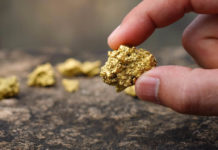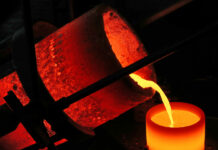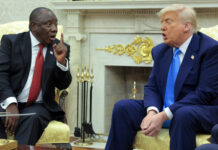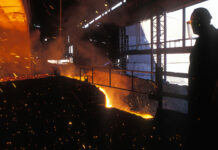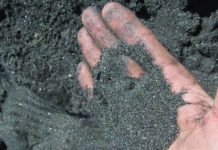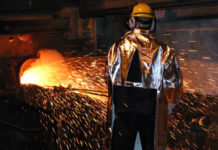
MERAFE Resources is nearing an agreement with the South African government on electricity supply tariffs aimed at saving up to 2.3 million tons a year in ferrochrome output – equal to a third of South Africa’s annual exports in the mineral.
Merafe already benefits from a special tariff with Eskom, the state-owned power utility. Despite this, Merafe shut its Boshoek smelter from 1 May and Wonderkop from 31 May following from 10 other shuttered smelters.
“There’s already a special tariff, but unfortunately that special tariff is not special enough for us to actually be viable in South Africa,” said Japie Fullard, head of operations at the Merafe-Glencore Joint Venture. “So we need an electricity tariff that’s even better than what we are seeing now,” he added.
“We are working with government to find solutions around that. And we are, in my view, fairly close to a possible solution.”
Fullard’s comments, made at Merafe’s interim results presentation in which the company posted a 55% decline in headline earnings year-on-year, come just over a month after South Africa’s electricity minister, Kgosientsho Ramokgopa said a proposal was before Cabinet on improved tariffs for intensive energy users.
South Africa has lost an estimated 300,000-350,000 jobs due to the closure of 14 energy-intensive smelters across the country, he acknowledged. This has significantly impacted the economy and contributed to budget pressures.
In 2024, South Africa supplied about 3.3 million tons (Mt) of ferrochrome out of a global production total of 17.5Mt. Merafe has installed capacity of 2.3Mt a year.
“We are going to restart smelters,” said Ramokgopa.
Restarts are not in Merafe’s planning, however; at least for the remainder of its financial year, said Fullard. “I can tell you that in our modeling, we do not see in 2026 in the absence of any governmental assistance Wonderkop and Boeshoek smelters restarting,” he said during the interim presentation.
The joint venture’s Lion Complex would remain suspended for the remainder of the year while the partners ran a maintenance programme. Fullard said this would enable the JV to bring Lion back into production as it wanted, although potentially as a two- rather than four-furnace operation, depending on future economics.
Instead of ferrochrome, Merafe is exporting chrome ore, a less beneficiated input in the steel industry. Merafe’s stockpiles of chrome as of end-June were 246,000 tons.
“It doesn’t make sense for us to convert ore to ferrochrome because of the conversion margin versus selling ore to China. There’s about a 10 to 15 US cents per pound difference,” said Fullard. “So for that reason, we would rather sell the ore than convert that into ferrochrome.”
Incentives?
Asked to give an estimated incentive price for a smelter restart, Merafe CEO Zanele Matlala said a ferochrome price above a $1 per pound (compared to a current 89 US cents/lb), in combination with a reduction in input costs would be viewed favourably by the company
The government is also considering a chrome tax in order to force exporters into smelting ferrochrome. While Zanele said a chrome tax could assist her company it was “no quick fix. I think there’s still quite a lot of work to be done to a point where from a government point of view, they decide whether they go with it or not”.
Merafe, which shares 20.5% of earnings before tax, interest, depreciation and amortisation (Ebitda) from the JV with Glencore, said it would pay a 4 South African cents per share interim dividend which compares to a 20c/share dividend declaration at the interim stage in the firm’s 2024 financial year.



